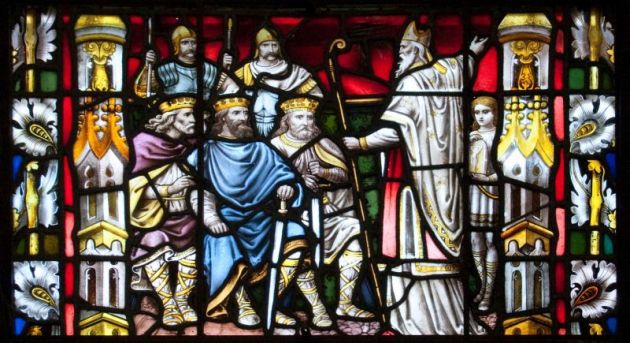On March 17, Saint Patrick's role for serving migrants is highlighted

On March 17, there are celebrations around the world for Saint Patrick's Day for the patron saint of Ireland, adopted by many, notably in the United States, and other countries settled by Irish people.
Like many holy feasts, St. Patrick's Day has morphed from a holy feast day to a secular festival, but his role for migrants is seen as special.
U.S. President Ronald Reagan said in a speech at the Irish Embassy in Washington in 1987, "It's an honor and a pleasure for me to be here with you sharing the spirit and the festivities for St. Patrick's Day.
"The blessing of St. Patrick we were told died on this day in the year of Our Lord, 461, and leave it to the Irish to be carrying on a wake for 1,500 years."
The Irish have observed St. Patrick's Day as a religious holiday for over 1,000 years, according to History.com.
On St. Patrick's Day, which falls during the Christian season of Lent, Irish families would traditionally attend church in the morning and celebrate in the afternoon.
"Lenten prohibitions against the consumption of meat were waived, and people would dance, drink, and feast on the traditional meal of Irish bacon and cabbage," notes History.com.
St. Patrick lived during the fifth century AD and is the patron saint of Ireland and its national apostle.
He was born in Roman Britain, kidnapped, and brought to Ireland as a slave at 16.
BRINGING CHRISTIANITY TO IRELAND
He later escaped, but returned to Ireland and was credited with bringing Christianity to its people.
Following Patrick's death, believed on March 17, 461, the mythology surrounding his life became ever more ingrained in the Irish culture.
One of the best-known stories about St. Patrick is that he explained the Holy Trinity (Father, Son, and Holy Spirit) using the three leaves of a native Irish clover, the shamrock.
In a 2024 message, the Archbishop of Armagh and Primate of All Ireland, Eamon Martin, said, "On Saint Patrick's Day, our thoughts and prayers naturally turn to our Irish emigrants abroad.
"Some left Ireland many years ago and have set down roots in other countries; others, including many thousands of our young people, have only recently gone in search of new places and opportunities."
Martin noted, "Saint Patrick might well be considered a patron saint of migrants. He certainly understands the predicament of the trafficked unaccompanied minor; the exploited labourer; the escaping refugee; the immigrant, the emigrant; the expat; the student or missionary abroad!"
The Irish archbishop noted that in his book Confessio, Patrick wrote about enduring many hardships, hatred, and insults in Ireland for being a foreigner.
"But having escaped his persecution and finding himself back amongst family and friends, Patrick heard the voice of the Irish, calling him, 'Come back gentle youth and walk once more among us.' Returning to our shores, Patrick made Ireland his home and liked to call himself 'one of us'.
"Today, as we think of Irish emigrants who sometimes struggled to gain acceptance in foreign lands, we also turn our hearts to the many newcomers who have arrived among us.".
"Going and coming is a major feature of the modern world. Millions of people are on the move," said Martin.
"Some are voluntary migrants, seeking exciting new challenges and opportunities; others, sadly, are forced to leave their homes and families, displaced by war or economic hardship."
